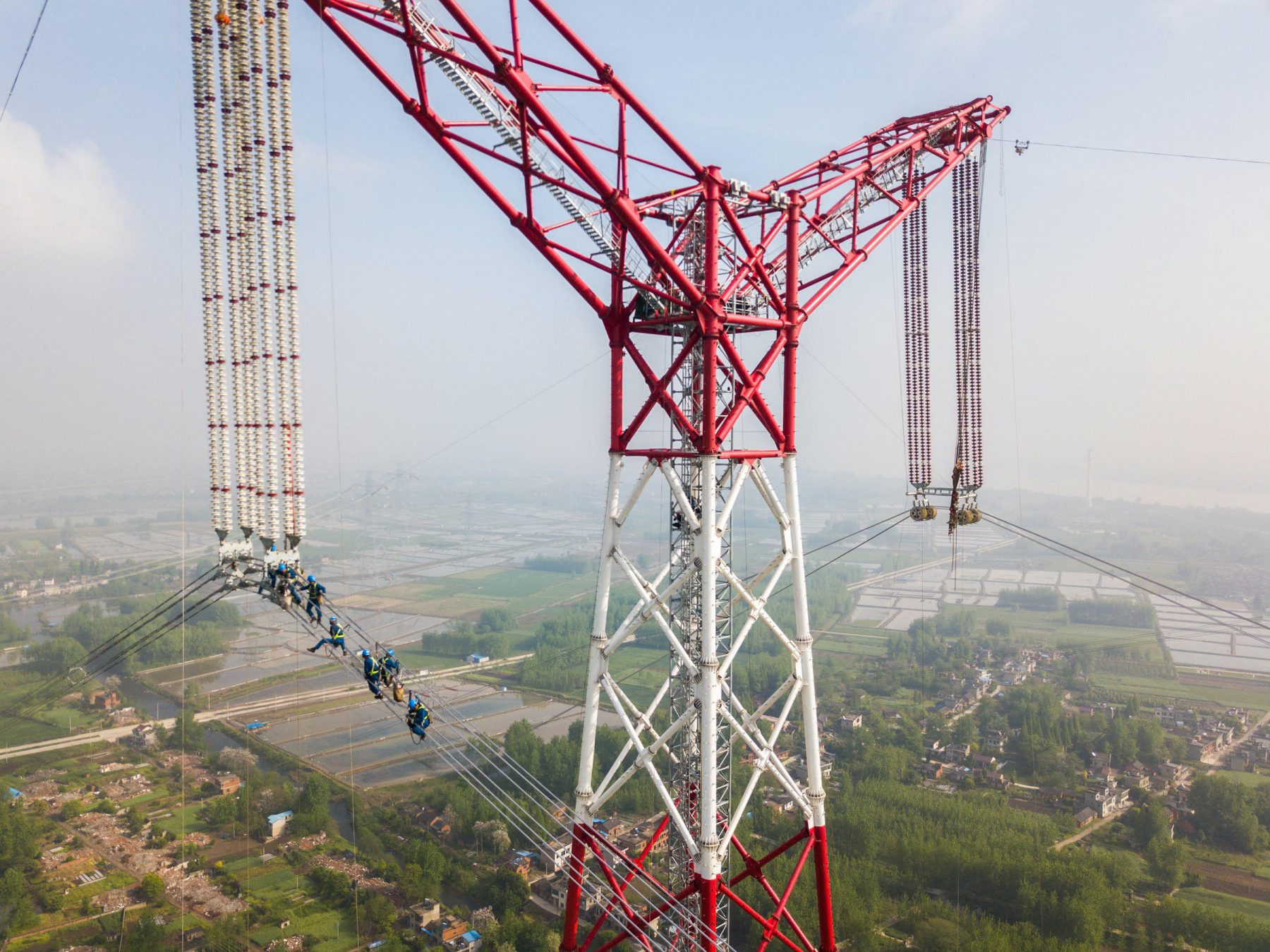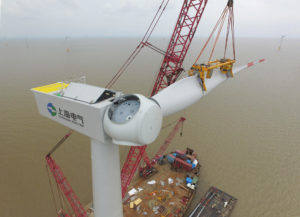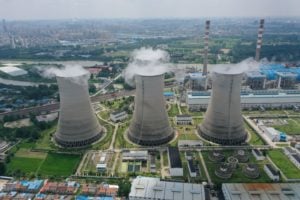Power shortages and recent energy policy announcements in China have drawn renewed focus to the topic of energy security, particularly to the supply of coal and coal-fired electricity. The recent scramble to boost coal supply and stabilise coal power output highlighted China’s reliance on the fuel for baseload power, and may appear to have put cleaner alternatives at a disadvantage. But new reforms adopted in recent months to address energy security have the potential to help renewable energy adoption in the long run.
Importantly, volatile coal prices and supply disruptions have highlighted that coal power is not necessarily secure. In contrast, wind and solar boast stable and secure prices, even though their output varies. Market reforms aimed at easing the trading of renewable energy among provinces should help mitigate the challenge of renewable variability, while encouraging businesses to procure wind and solar as a hedge against rising fossil fuel costs.
Renewables increasingly linked to energy security
The issue of energy supply security has risen to the top of China’s energy agenda over the past year. During its recent economic planning conference, held in December, China’s top officials listed energy security as the top priority, and gradual, step-by-step deployment of renewable energy as one of several solutions. Some regions in China experienced power outages in September 2021, which were caused mainly by physical coal supply shortages in certain regions and a pricing mismatch between coal prices and electricity prices, leading coal plants in many regions to operate at less than 50% capacity.
Wind and solar power outputs fluctuate, but offer concrete benefits for supply security by supplanting fossil fuels, which have seen record high prices recently in China, as well as Europe. Given their lack of fuel cost, wind and solar can serve as a price hedge against fossil fuel price volatility.
This is a point echoed by Fatih Birol, the head of the International Energy Agency, who recently wrote that scaling up renewable energy can address energy security issues related to fossil fuel imports and market price volatility, and thus urged the acceleration of renewables build-out.
There is no solar equivalent of the chokepoints of the straits of Hormuz or Malacca
The International Renewable Energy Agency (IRENA) estimates that renewable capacity added in emerging markets since 2010 has reduced energy costs by around US$32 billion each year, while the wind and solar projects installed in 2020 alone will save these economies a further US$150 billion over their lifetimes. Savings will increase as renewable prices fall – and even more so if fossil fuel prices also rise.
Wind and solar presently supply just over 10% of China’s electricity, which may not seem like much, but every year this renewable output supplants an immense amount of coal, which prevents emissions and keeps carbon in the ground. Unlike physical fuels, the costs of wind and solar mainly take the form of capital investment cost. These energy sources do not suffer from price volatility or experience such severe supply bottlenecks. Even when the price of polysilicon – a material used to make solar panels – surges, as it has in the past year, the resulting effect on solar power prices has been modest. There is no solar equivalent of the chokepoints of the straits of Hormuz or Malacca.
Reforms will likely speed renewable adoption in China
Until the last three or four years, wind and solar were too costly in China to justify power companies to invest without subsidies, or for voluntary purchases by companies or individuals to have much of an influence. Instead, China and other countries promoted renewable energy by offering subsidies – in China’s case, mainly through a subsidised fixed payment to generation companies for energy produced by wind and solar, called a feed-in tariff. Subsequently, as prices fell, China gradually removed the subsidised feed-in-tariffs and introduced other administrative measures, such as provincial quotas for wind and solar, as well as renewable energy auctions, in which state-owned power companies competed for a fixed quota of long-term contracts at or below tariffs paid to coal plants.
Today, however, newly built Chinese wind and solar facilities can compete with the prices offered by coal plants – even smaller-scale, distributed solar rooftops are now price competitive. However, China’s power market is designed around conventional power plants. Several new policy reforms announced in late 2021 are likely to shift the playing field and improve the economics of renewable energy.

The first of these relates to the rather arcane topic of how retail power prices fluctuate over time. In July 2021, the central government announced a new policy on time-of-use (TOU) power prices, which refers to the price charged to retail customers at each hour of the day. TOU prices generally apply to commercial and industrial consumers, not households. By charging customers more for power at peak times, TOU prices encourage shifting loads away from peak periods of the day.
Previously, provinces and localities have adopted a variety of TOU pricing patterns, generally featuring peak prices that were around two or three times higher than nighttime prices. The new policy encourages a wider price range, with prices at peak times up to four times more expensive than at night. Since the morning peak power price coincides with the sunniest time of day, such policies generally benefit users with solar, making distributed rooftop solar economical in many cities where it wasn’t before.
The second important change in renewable economics concerns the price of fossil fuels. In October 2021, China sought to address power shortages by allowing the coal power tariff to rise by up to 20%, up from 10% previously. For those industries classified as “dual high” – that is, with high energy consumption and high energy intensity – there is no cap to the prices generators may charge. Coal plants are no longer guaranteed minimum operating hours at a fixed price, but must sell all their output into the market and compete for dispatch.
Meanwhile, new administrative rules for coal producers and coal power plants have also capped prices and profits at coal mining operations and required coal plants to remain operational at least as often as previously. It may seem permissive, as such administrative rules are aimed at boosting supply of coal and its power, but they ultimately hit profits of coal companies. Meanwhile, the higher price of grid power – and specifically coal power – directly improves the competitiveness of wind and solar.
New trading schemes could enhance renewable uptake
The green power trading platform launched in September showed how this competitivity might work in practice. The platform has only held one day of trading so far, but many of the renewable energy contracts signed by enterprises on that day represented multi-year deals – locking in prices for buyers that were then 5–10% higher than the regulated coal power tariff in place at that time. However, that was before the power shortages that ultimately led policy makers to raise prices from coal power. Since the green power trading platform contracts offered fixed prices on renewable energy, those industries that managed to secure power-purchase contracts were lucky to lock in the prices when they did. In the future, green power trading is planned to take place on a regular basis.
Perhaps the most important power market policy now under development concerns the trading of electricity among provinces. For years, China’s grid companies have worked to construct vast new high-voltage power networks, including some lines designed specifically to connect large renewable energy-producing regions to the populous coastal regions. Cross-provincial electricity trading is important for both electricity security and increasing renewable uptake. This is because it helps ensure that local supply can be supplemented by power from neighbouring or even distant regions when there are shortfalls – for example, a heat wave causing coal power outages or a period of slow wind that saps wind power output. Balancing renewable energy over larger regions smooths their output and reduces the need for coal plants to ramp up and down.
If market reforms succeed, installation rates have the potential to accelerate.
A new inter-provincial electricity trading policy announced in November 2021 should help this. Until now, China’s ambitious cross-provincial transmission programme has proceeded faster than reforms to how provinces actually plan and dispatch their power systems. Most of the country’s wholesale power market currently consists of monthly and annual bilateral contracts – time periods that are a poor match for variable wind or solar – and most contracts are either within a single province or for providing a steady amount of power from one province to another. These inflexible power contracts lead to a two-track system: one track for steady power supplies from coal plants, and another for fluctuating renewables. And in case of a power supply shortfall, as happened last year in northeastern China, provinces have even initiated rolling blackouts for local customers while continuing to export power under the terms of such monthly and annual contracts.

Spot power trading, which refers to trading in shorter time periods such as one hour, has the potential to help fix this inflexibility. Most provinces in China have now established spot market pilots, though most have relatively small trading volumes compared to the mid- to long-term markets described above, and many have only traded continually for short periods. However, these pilots have been limited to trading within provinces; the only spot trading between provinces took place when those with excess renewable energy would offer that surplus to neighbouring provinces. This practice has helped reduce renewable curtailment, but has not led to regional sharing of reserves or the emergence of a regionally integrated market for electricity.
If the new cross-provincial spot market set out in the November 2021 energy reform takes off, this would change. In an ideal power market, the amount of energy one province or region sends to its neighbour should depend on the relative supply and demand at each moment in time – meaning at some hours power might flow in one direction, and at other times the flow would reverse. This would help improve energy security and make power supplies more cost-effective, reducing the likelihood of both price spikes and actual physical power outages. The new policy specifies that all generation types will participate in cross-provincial trading, not only “surplus” renewables, meaning that such markets are more likely to have sufficient trading volume to ensure they influence prices and that renewable energy can compete head-to-head with coal.
It will take some time to roll out cross-provincial renewable electricity trading, and the policy is planned to proceed step-by-step, beginning with a few pilot provinces and regions in the lead. Inter-provincial market-based electricity trading has implications for power system planning as well. Currently, transmission lines are typically planned based on the assumption that power will flow in a single direction, with a fixed utilisation threshold required for approval. In the future, more integrated system planning could follow practices in Europe and parts of the US, where new lines are planned not based on the volume of electricity they carry, but rather on the economic and emissions benefits that result from their construction. This concept was illustrated in a recent analysis published by the EU-China Energy Cooperation Platform, developed together with the European Network of Transmission System Operators-Electricity (ENTSO-E).
Reforms likely to accelerate renewable energy transition
China’s electric power market reforms have reached an inflection point. With the announced reforms, they have the potential to play an increasingly large role in both accelerating the transition to clean energy, and unleashing the power of businesses and consumers to push that transition forward by purchasing clean energy at reasonable prices via the market.
In the past decade, China has become the top country for new wind and solar installations due to the strength of its manufacturing scale and consistent policy supports, including subsidised feed-in tariffs. As renewable energy costs have fallen and subsidy burdens rose, the government has responded by removing subsidies and moderating annual installation, as reflected in national targets. Even with this moderation, if China merely continues to install wind and solar at the same rate as over the past three years, these energy sources would easily surpass the country’s 2030 target of a combined 1,200 GW of wind and solar capacity.
If market reforms discussed here succeed, however, installation rates have the potential to accelerate. Not only will businesses potentially opt to procure renewable energy as a price hedge, but provinces and state-owned companies will have new ways to accomplish the dual goals of improving energy security while taking a stake in the rapidly growing market for clean energy infrastructure. As this acceleration gathers pace, China’s path to an energy system with clean energy at its centre will become clearer.
This article reflects the personal opinions of the author.








